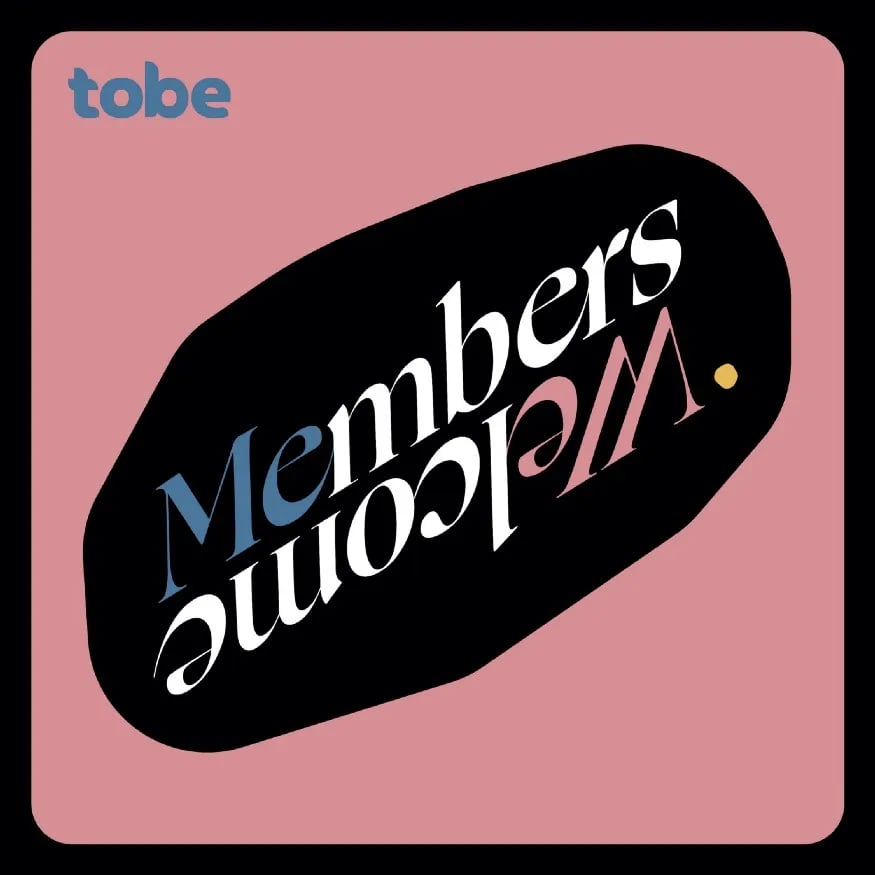A few weeks back, I had the opportunity to speak at HubSpot’s annual INBOUND conference. My presentation was about what Web2 brands can learn about community-led growth and how some of the earliest Web3 brands are using this as a channel for growth.
I love HubSpot because even though they’re a technology company, content is at the heart of what they do. And when it comes to content, HubSpot has a great mix of stuff that’s valuable for marketers TODAY, but also tons of forward-thinking, call it “marketing futurist’ content.
Overall, I got great feedback on the presentation, but there were some clear themes that emerged from those who didn’t have great feedback. I’ve had some time to digest some of the ‘negative’ feedback and realized that many of us in marketing, content, and overall growth are having trouble wrapping our minds around what Web3 is and what it means for us as professionals.
The truth is that the concept of Web3 hasn’t fully formed yet, however, there are some very basic principles and values that we can learn from the very early days of building on the blockchain.
In the very early days of Web3, here are a few ways I wrap my mind around Web3 as a marketer:
Don’t Get Caught in the Technical Jargon
You can quickly fall down a YouTube hole if you start searching for tutorials on what Web3, blockchain, decentralized ledgers, etc. are. Don’t fall into this trap. As a marketer do you need to know what exactly TCP/IP, DNS, etc. mean? You don’t.
We sometimes intimidate ourselves from learning more when we run into technical jargon that goes over our heads. You should understand the basic infrastructure “Web3,” (i.e. it is blockchain-enabled) but don’t get too technical.
The reality is that much of Web3 is not user-friendly and not “retail-ready.” You probably take the WYSIWYG editor for granted, but this was a basic publishing tool that we needed in Web2 to allow people to publish/write on the Internet. The equivalent of a WYSIWYG editor in Web3 doesn’t exist today for many applications. Coinbase is probably the best example of a
“retail ready” user interface that allows the masses to transact on the blockchain.
If you can’t fully explain the technical pieces behind what makes Web3 work, that’s OK. Some of the brightest minds are working on solutions like Coinbase that will hide the sausage that’s being made (just like we did in Web2). And here’s a great YouTube video if you need help understanding Web3 from a less technical perspective:
Think of Web3 as a Mindset
I got a little bit of pushback in my HubSpot presentation when I mentioned thinking of Web3 as a mindset. Maybe folks saw this as a cop-out answer to getting deeper into what Web3 is, but as marketers, there are some principles in Web3 that you should probably adopt as a marketer.
I love going back to this tweet thread by Chris Dixon.
If you’re a Web2 marketer, how does this tweet about the economics of Web3 resonate with you?
That said, we are still early in the exploration of the DAO design space.
— cdixon.eth (@cdixon) March 6, 2022
There will likely be opportunities to apply DAOs to novel areas and create breakthrough products.
Web2 social networks were built by convincing people to give away their creative work for free.
— cdixon.eth (@cdixon) March 6, 2022
This will stop working once creators realize there are credible alternatives.
As a marketer, I’ve always thought that FB, Google, etc. have all completed the largest land grab in human history by convincing all of us to give up our data and content in exchange for likes/comments and influence.
They walked away with trillions of dollars.
At best the brands/creators that built these audiences walk away with a ton of followers, but a social algorithm between them and that audience. The mindset to adopt here as a marketer is that you need to have a direct pipe to your audience, without a social algo or spam filter in-between.
web3 takes us back to the internet’s original vision: a decentralized network governed by open protocols, where power and money flow to the edges instead of centralized intermediaries.
— cdixon.eth (@cdixon) March 6, 2022
I wrote more about why web3 matters here: https://t.co/nkxHsBiiqC
This is just one example of why you should start thinking about the bigger picture mindset implications that the values and principles of Web3 have for us as marketers today.
On the surface, the technical jargon points to decentralized publishing platforms, but looking deeper into mindset, this is all about making sure you own your audience.
Web3 is More than Just Cryptocurrency and NFTs
Unfortunately, the last 10 years of the Web3 space have been dominated by cryptocurrency. I say unfortunately, not because I think cryptocurrency is bad, but because the discussion around Web3 has been dominated by traders, flippers, and all the memes that come along with people making money really quickly (cars, watches, and gross IG flexes in general).
No doubt about it, there are tons of scams, pump-and-dump schemes, and generally nefarious behavior that occur in blockchain. But I’d say these types of things exist in every ecosystem or community that has gotten to some sort of scale (anyone ever gets an email from a Nigerian Prince?).
Web3 and its technology are more than just trading a digital asset for profit. Those building in Web3 today are trying to find ways to use the blockchain in many other ways. Some are building infrastructure to allow artists and creators to monetize their work directly from their communities (“no-code” NFT platforms). Some are building literal companies, or Decentralized Autonomous Organizations (DAOs), enabled by blockchain technology.
DAOs are novel web3 constructs that supercharge online communities by providing more sophisticated coordination methods and control over internet-native financial resources.
— cdixon.eth (@cdixon) March 6, 2022
Yes, any mention of Web3 on mainstream media is likely Jim Cramer screaming about digital currencies or the latest NFT project rug pull, but remember how bad the mainstream media is today. And what they’re incentivized by: clickbaity attention.
So if all you’ve heard about blockchain is that it’s about a bunch of scammers, dig a little bit deeper and see if you can start to see some of the early traces of the next Facebook, Google, or Amazon being built. Just like they revolutionized (in good and bad ways) the way we communicate, search, and shop (not just bank) many of the earliest Web3 builders are working on projects not related to cryptocurrency or NFTs that have some major implications for the future.
Build Community First, Product Second
Have you read The Lean Startup? This was a revolutionary book in the start-up world because it helped entrepreneurs adopt a new mindset to building a business. Basically, it taught us to build a Minimum Viable Product (MVP) that proved that our product would be adopted by the market before going out and wasting millions of dollars on building a company brand, and product, and scaling up production for something that we THINK someone would buy. Fast forward 15 years later to 2022 and it’s a no-brainer that’s how we build modern companies.
The Web3 mindset takes the concept of the Lean Startup and the MVP and puts it on steroids.
With Web3, it’s all about building your community FIRST, and then working closely with your community to figure out what product/service you need to build for them. This implies that you have an audience to sell your product/service to BEFORE you even spend a dollar on product development. I love this mindset in Web3 because it prevents the enormous WASTE of time, money, and people resources that are used when launching a new company.
If you can build your community around the problems, challenges, and opportunities, that your product/service INTENDS to solve, you’ve just built your first 1,000 true fans. And if you’ve got those 1,000 true fans, you’ve got a path to revenue before you’ve even lifted a finger to build that product/service.
This is the concept of community-led growth that Dharmesh Shah spoke about at HubSpot’s 2022 INBOUND as well.
Web3 Means Community-Driven Content Strategies
Many of us Web2 professionals in marketing and content build our content in a silo. We basically ask ourselves, what does Google want to see? What does the IG algorithm prioritize? Then we come up with a content strategy to reach the audiences we’re targeting. This is a very top-down way of approaching content and marketing. No doubt about it, this approach has worked over the last 15–20 years.
But as we move towards a world where people are more weary of social media algorithms, and by extension, privacy, your audiences are going to prefer engaging with content that not only comes from their community but is also created by their community.
User Generated Content (UGC) is nothing new to the content and marketing space. But as I see more companies launching as Web3 native brands, I’m finding that they’re taking the concept of UGC to another level. Good examples are community members posting pictures of their golf rounds in a golf-related Discord server. Or someone who just bought his/her new Porsche and posted a delivery video to a worldwide private Facebook Group. And of course, you see the rise of the Creator and they have developed an entire economy around evangelizing their favorite products and services.
If you’re in content or marketing for a Web2 brand, a big takeaway from Web3 is that you need to start thinking about how to incorporate UGC into your overall content strategy. The act of sourcing this content from your community actually builds the community itself because now you’re reaching out and engaging with your customers in a completely different way.
Wrap-Up
There’s a lot of misunderstanding about the Web3 space and it’s clear that we’re still in the very early days of Web3. Look at Web3 as sort of a person in adolescence trying to find themselves. So if you’re confused, so are many in the Web3 space, because it’s still growing and trying to find its identity (sorry to get so existential on you).
But, there are some really interesting principles and values of Web3 that are starting to express themselves as future trends for what we do as content strategists, product managers, and marketers today. Web3 shouldn’t be a dirty word that’s associated just with cryptocurrency and NFTs, but it should be a mindset to how we think about connecting with people at scale on the Internet.
Want to learn more about some of the bigger-picture growth trends that I think entrepreneurs, marketing, product, and sales teams should pay attention to? Check out my monthly podcast Members Welcome (Spotify).
Check Out the Members Welcome Podcast

.png)

-1.png)
.png)